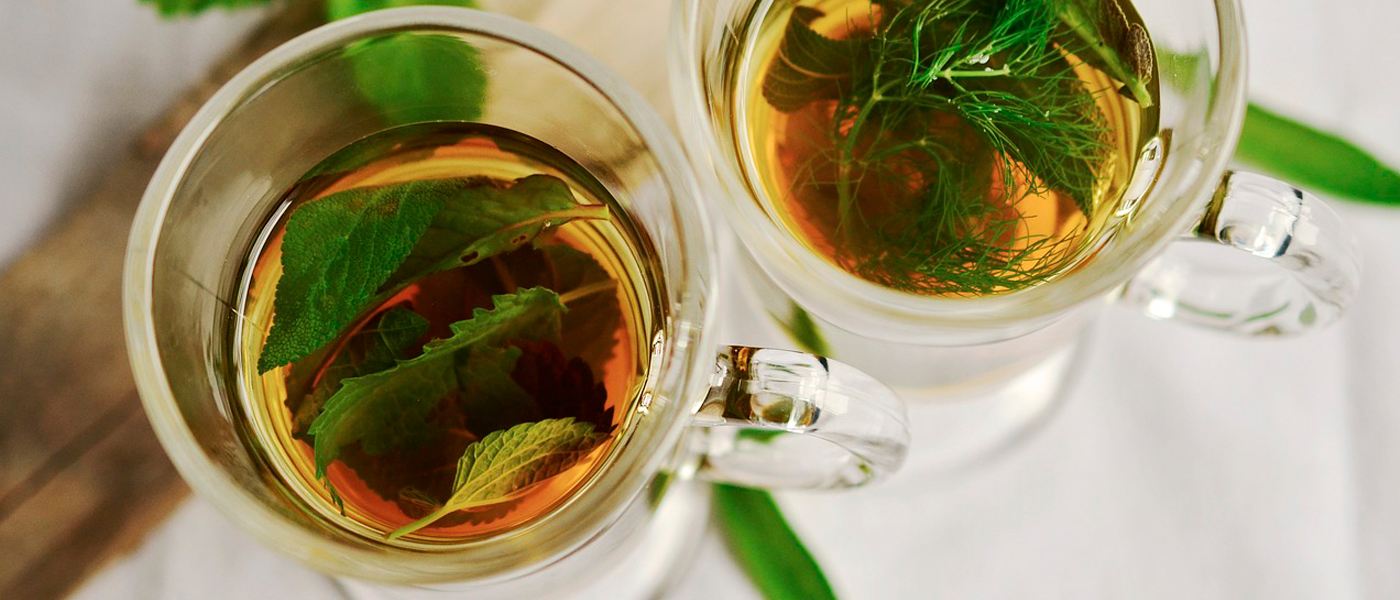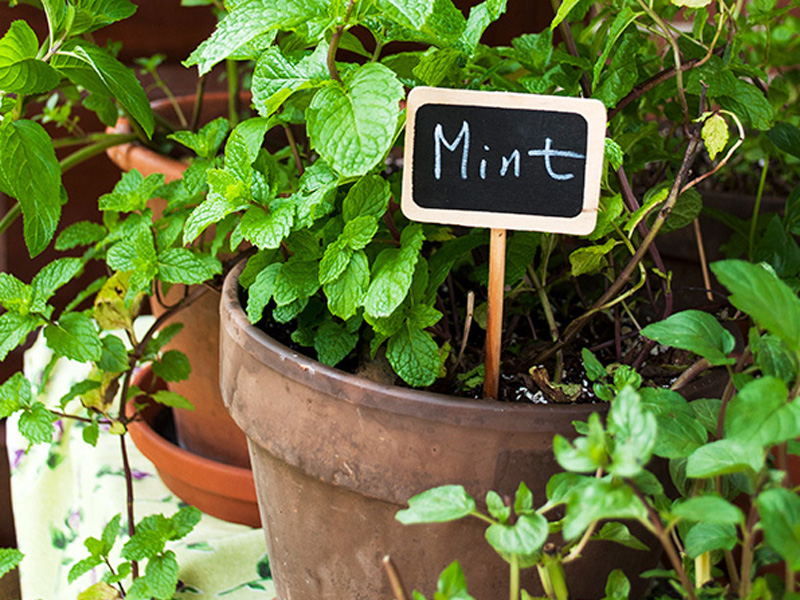Savoring Serenity in a Cup
On an overcast, chilly day, there’s nothing quite like spending a few minutes to take a breath while sipping a cup of warm herbal tea. Picture this: The aroma of orange and banana mints mingle in your favorite cup. You add a spoonful of honey or a slice of citrus to round out the flavor. A short break with that delightful tea can help bring back pleasant memories of last year’s garden.

Herb Beverages
There's a renewed interest in using homegrown herbs in beverages that range from hot or iced tea to smoothies and cocktails. It saves money, it's easy, and it's satisfying. A small pot of herbs or a packet of seeds costs about the same as a box of fancy tea bags. However, when you grow and use your own herbs, you’ll be treated to many more cups of flavorful tea. And you control the quality—you’ll know that the herbs you grow are free from pesticides, preservatives, and artificial flavors or colors.
Hold the Caffeine
All commercial tea, such as black, green, and oolong, is made from Camellia sinensis, which is an evergreen bush that is native to Asia and not hardy in Illinois. Caffeine occurs naturally in this plant. Unlike commercial black teas, homemade herbal tea doesn’t have caffeine.
Tempt Your Tastebuds
Many herbs can be used to make tea, including several different types of mint besides the usual spearmint and peppermint. Growers now offer mints with flavors or scents such as lime, lemon, ginger, pear, banana, apple, chocolate, and orange. Any of these flavors can be used or combined with other culinary herbs.
Lemon verbena, lemongrass, lemon balm, chamomile, basil, Oswego tea (Monarda didyma), rosemary, parsley, sage, dill, and thyme are some of the other herbs suitable for tea. It all depends on what flavors you enjoy. Lemon-tasting herbs can be paired with slices of citrus, cinnamon sticks, or honey, while savory herbs like sage and rosemary are good on their own. (Never use a plant part for a tea unless you know it is safe to consume.)
Most teas that use herbs are prepared by pouring very hot (not boiling) water over the fresh or dried leaves. This is called an infusion or ptisan (pronounced tih-SAN). An infusion gently releases the herb’s aromatic oils. If boiling water is used, the oils evaporate and the flavor is lost.
Brew It

If you are using fresh herbs, start by lightly bruising the leaves to release the aromatic oils. Gently crush them in a clean cloth or between sheets of wax paper. You can also use dried herbs. In general, 1 teaspoon of dried herbs can be substituted for 3 teaspoons of fresh herbs.
For each cup of herbal tea, you’ll need
- 1 teaspoon dried herbs (or 3 teaspoons of freshly picked herbs)
- 1 cup very hot (simmering) water
Place the herbs into a mesh tea infuser. These are handy, inexpensive tools found in grocery stores and kitchen supply shops. Put the infuser into a cup and pour the hot water over it. You can also use a French-style coffee press, which holds loose herbs in place. Or, put loose herbs into a teapot, add the water, steep, and strain into the cup.
Allow the mixture to steep covered for 5 to 10 minutes, or until the delicate flavors are released. Teas made with herbs typically remain light green or amber. Determine the strength or weakness of the tea based on its taste, not the color.
A twist of orange or lemon peel is a refreshing, aromatic addition to many herbal teas. A slice of peeled ginger works well, too.
Nina Koziol is a garden writer and horticulturist who lives and gardens in Palos Park, Illinois.

